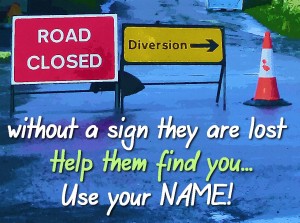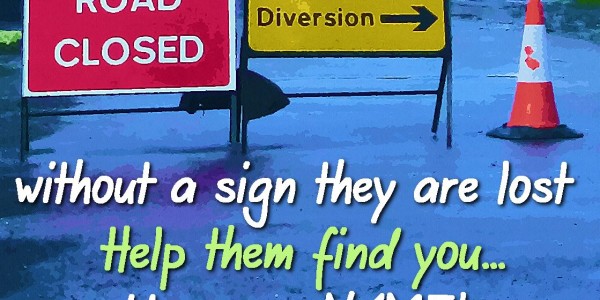There are many industries that use a person’s name as the brand for a product but in the arts in particular, your name is important even before you are well-known or established.
As an artist begins to gain a following, the name of the artist is what people talk about. The name is passed on to others and identified with your art and is the single unifying factor for the artist.
This is true of many different creative arts and includes writers, where it is sometimes a pen-name that is the brand, and musicians. The latter often have a collective name, a band name if you like, but even individuals may have other works outside of that band connected with their name or may belong to different bands over time.
Similarly, in the visual arts there may be ‘movements’ or ‘collectives’. There may be a number of artists associated with a studio, a collection of studios or a gallery. These organisations put on shows to promote the artists together and some will run promotions of individuals too. The overall quality of the work or the type of work may be associated with the organisation and, if that quality is high or the subject matter relevant, being associated with it can be beneficial to an artist.
It must not be forgotten that the name of an individual artist can be beneficial to an organisation too. When a well-respected artist is represented by a gallery, for example, other artists can gain respect by association. If you are just starting out, you might think that point is not relevant to you, but the sooner you establish your own brand – that is you – the better.
Establish Your Brand
 A presence on the internet is a great way of establishing an artist identity. As people turn to the internet more and more to find information, it could be said that it is essential to have a strong presence as an artist providing some information about you and your art.
A presence on the internet is a great way of establishing an artist identity. As people turn to the internet more and more to find information, it could be said that it is essential to have a strong presence as an artist providing some information about you and your art.
A number of artists whose first thought on this is “OH NO! I don’t know how to do that! I can’t make a website! I don’t want to either – I’d rather just make my art.” will shy away from the idea. But most would like to show their work, and other means of getting it seen can be very time-consuming too. Even if you prefer to approach galleries personally, how much simpler that would be if you can deliver the information they require through a website.
There are plenty of sources of help to make a website, you only have to search for it. Yes, making a website can be daunting if you have never done it before. It is easy though, to make a start and have a website that has enough information to claim your place on the internet as an artist and create your brand.
Adding Information
Once you have a website, even a very simple and small one, it gives you a place to gather all the information together that people want to know. You can give all your current information and add new information as it arises. Your own website lends authority to your name.
You know, if you’re stuck for ideas, at the very least you can put up a sort of ‘business card’ showing how people can contact you, but you can also do so much more.
These are some of the things that can be on your website:
You can tell people about your art form, and what inspires you. You can list the places where your art is shown – galleries and exhibitions. If you belong to any organisations such as clubs or associations, these can either be listed here or their websites can link to yours. You are then the centre of your art. The galleries, studios, associations are satellites revolving around you. Your name may come to be associated with many different organisations.
Other content to establish your brand
I have written about one way of beginning to make your name online which is to start a blog. You can read ‘why an artist should start a blog’ here.
If you want, there is more still. You can govern what you want to show to the public about your art.
You can show samples of your work, describe details about methods and materials used etc. You can add a portfolio or even a shop for your work.
The main thing to take away from this is that you can have a presence online and establish your brand. The details of how best to represent yourself are a matter for the individual and will vary accordingly.
If you are thinking of having a website what are the concerns and difficulties that are holding you back? If you are an artist who already has a website, what are the difficulties or advantages you have experienced?
Please share your thoughts on this in the comments below.

